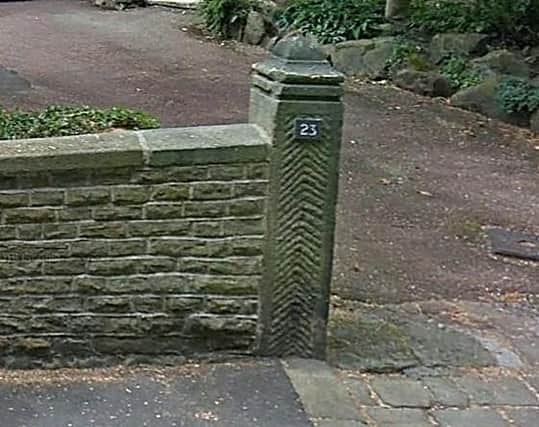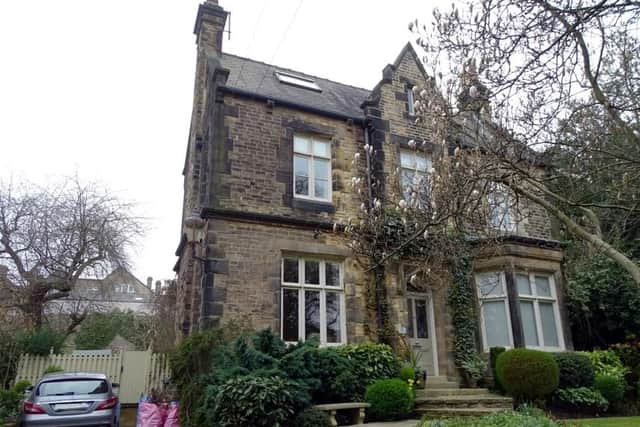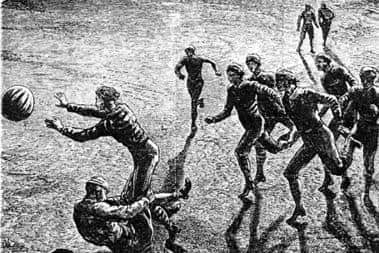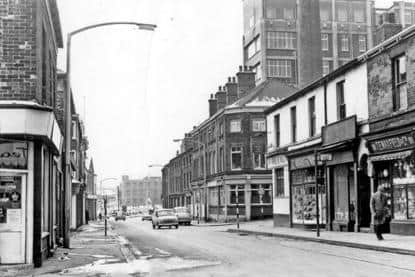Name of floodlit football pioneer lives in on at Sheffield firm


In 1879, John Tasker was the resident.
John was born in Devon in 1819. By trade he was a boot & shoemaker.
I could not say what made John to up sticks and move to Sheffield.


Advertisement
Hide AdAdvertisement
Hide AdEverybody needs shoes or boots, but I would have thought coming here had better opportunities than living in a rural area of Devon.
In the 1825 directory of Sheffield, John can be found as a shoe maker at 2 Pond Hill, Sheffield city centre.
In the 1833 directory, he is still at the same address, but also living there too.
His boots and shoes seem to have been very well made as by 1849 he is listed at 88 Division Street across the city centre - bigger premises and a bigger order book, just a year before his wife Emma gave birth to John Junior.


By 1851, John was employing six men.
Advertisement
Hide AdAdvertisement
Hide AdHis family now had also grown and John and wife Emma, aged 31, were parents to daughter Adela, five, and sons John Henry Royle, aged two, and two-month-old baby William.
The year 1862 saw John listed as India rubber & gutta percha merchant and worker, plumber, & patent pump manufacturer, at 32 Angel Street in the city centre.
He, in fact, introduced gutta-percha and India rubber to Sheffield.


From his premises on Angel Street, he had progressed to supplying leather drive belts for the many factories in the town.
Advertisement
Hide AdAdvertisement
Hide AdIt was about this time he started to the engineering side of the business, which took off at an alarming rate, so much so they moved to larger premises on Station Road and eventually became Tasker`s Engineering Co.
I should imagine 15-year-old John Jnr was now working alongside his father learning the business.
As proof of his success he moved into 23 Taptonville Road in about 1877.
The same year, he established one of the first telephone exchanges in the provinces, at his Angel Street store.
Advertisement
Hide AdAdvertisement
Hide AdThis became the Sheffield Telephone Exchange, but demand was slow to build up.
The year 1878 saw him installed as the mayor of Sheffield.
In the true pioneering spirit, he then continued to involved himself in telecommunications and his Angel Street store became one of the first telephone exchanges in the provinces.
Becoming a name of importance in the telephone business he installed private exchanges for Queen Victoria at Windsor Castle and Balmoral.
The greater resources of the National Telephone Company overcame the Sheffield Company and this came to a conclusion in 1888.
Advertisement
Hide AdAdvertisement
Hide AdThe other private venture, electricity, came to an end when Sheffield Corporation purchased the electricity undertaking in 1898.
Sadly his beloved wife, Emma, died in 1892, the same year he retired.
John died at his home in Lawson Road just three years later.
On October 14, 1878, John instigated the very first football match under floodlights anywhere in the world,
Advertisement
Hide AdAdvertisement
Hide AdThe match was between Sheffield FC and Hallam FC and, to the delight of the committee, the attendance was more than 12,000 and the gate receipts amounted to £300.
Some say the crowd was nearer 20,000, many of whom climbed over the fence.
The lights were more exciting than the match which ended in a boring 0-0 draw.
In fact, the craze for floodlit football was short-lived.
It was 10 years later, in 1888, when it took off again and that was due almost entirely to the development of what was known as the Wells Lamp, which was to prove both a reliable and effective source of illumination.
Advertisement
Hide AdAdvertisement
Hide AdBut to go back to the first game at Bramall Lane. I quote from Chris Hobbs website: “The consensus was that the event had been a great success. - the gate at Bramall Lane that night was the highest ever for an association match in England but it must be noted that a fair proportion of the crowd were there to witness the artificial lighting and not the football.
“There is no doubt that the success was due to the careful planning and preparation of the event - the game coincided with a full moon providing a modicum of natural light - and the weather for once that autumn was favourable.
“The other factor that cannot be under-estimated is that the lighting was provided and arranged by a Mr John Tasker Sons and Co, of Angel Street, Sheffield, who were already forerunners in this new field of electricity”.
Adaptability was John`s motto.
He turned his hand to almost anything from the invention of a bouncy ball to a way of mending galoshes using India rubber.
Advertisement
Hide AdAdvertisement
Hide AdHis involvement with rubber opened his eyes to electricity via wire insulation, and he was particularly intrigued by the phone, once Graham Bell's invention arrived in England.
This prompted him to open Sheffield's first telephone exchange with just 12 subscribers, using the Williams sliding spring-peg switchboard.
The telephone was just one element in Tasker's appetite for all things electric.
He also helped build Sheffield's first power station and electricity supply network.
Advertisement
Hide AdAdvertisement
Hide AdA contemporary of John Tasker described him as: “The short, rather ungainly figure, so well-known in the centre of the city in the Seventies and Eighties, gave no indication of the busy, active brain which governed it, but a glance into John Tasker's keen eyes revealed something of the indomitable will, the almost dauntless courage which spurred him on to researches which have left undying marks on the story of Sheffield's progress.”
Today Taskers is one of Britain’s leaders in their field specialising in hydraulics based at Roman Ridge Road, Wincobank, a world away from making boots and shoes by hand.